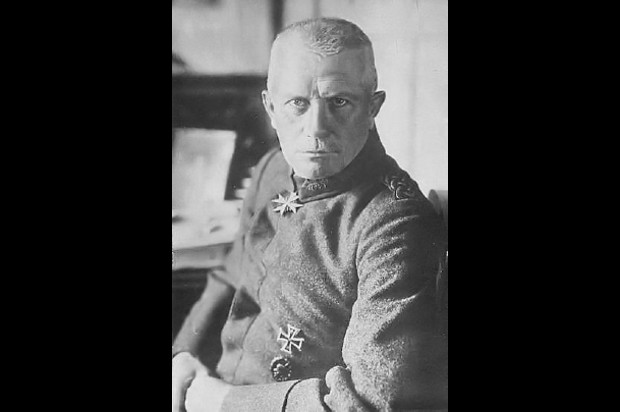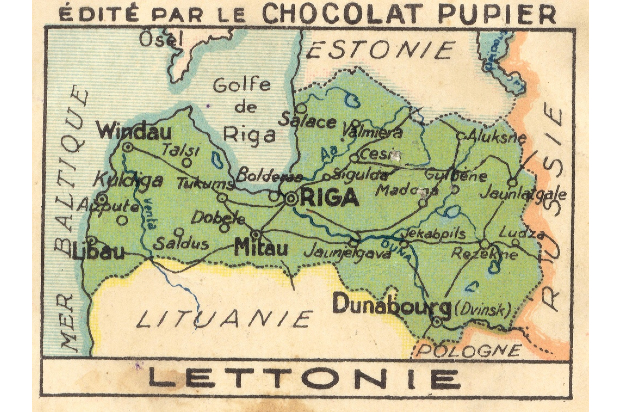Harold Alexander is better known for his part in winning the Second World War, as shown by his later title of Earl Alexander of Tunis. However, his activities in Latvia in 1919 to 1920 are worthy of greater attention than before as they are the story of when the soldier became a diplomat.
Born into an Irish aristocratic family in 1891, he followed the common tradition of the time of younger sons of the gentry of joining the army. After passing out from Sandhurst in 1912, he was commissioned as a 2nd Lieutenant in the Irish Guards.
During the First World War he quickly rose up the ranks, ending it as an Acting Lieutenant-Colonel, 4 ranks higher. After the war, he joined the Allied Relief Commission to Poland. In May 1919, he travelled to the Baltic as part of the mission there. The newly formed Baltic states’ independence was under threat because of the Russian Civil War.

Latvia
The situation in Latvia was challenging, with many different groups fighting. These included:
- the Bolsheviks,
- the anti-Bolsheviks (White Russians)
- the Latvian people (Letts)
- the Estonian army
- Ethnic German Latvians (Baltic Germans)
- Freikorps (German anti-Bolshevik militia), those fighting in the Baltics were enticed by the promise of land in Latvia
- and British and French troops
In essence, it was a question of Russian or German rule, and the Allies wanted neither. Under the 1918 Armistice Agreement, German forces had to remain in the Baltic as the most effective force against the Bolsheviks. In May 1919 a force comprising of Baltic Germans, Freikorps, White Russians, and Letts cleared the capital, Riga, of Bolsheviks. Riga was now German dominated. Alexander, along with his commanding officer, Colonel Tallents, arrived there on 7 June.
Under the leadership of German General Rüdiger Von der Goltz, some of the German forces that had cleared Riga continued into Estonia rather than leaving Latvia. Von der Goltz felt strongly that Germany had not lost the war on the Eastern front. He was a firm believer in the notion that the army had been ‘stabbed in the back’ by the signing of the Armistice in November 1918. He wanted to restore German honour through his actions.

Source: fi:K. A. Wegelius, Suomen leijona ja Saksan kotka
On 3 July 1919 Tallents arranged a local armistice between the various non-Bolshevik parties. Under this, German forces would withdraw from Riga, with a commitment to leave Latvia by October. The challenge remained to clear the rest of the country of Bolsheviks.
Working with the Landeswehr
The Landeswehr, consisting mainly of Baltic Germans, were the most experienced force fighting the Bolsheviks. However, their sympathies lay with Germany. Lieutenant Colonel Alexander was given command of the Landeswehr to clear the land of Bolsheviks. His qualifications were that he spoke German and Russian, but more importantly, both Baltic Germans and Letts respected him. Another reason for his appointment given in Tallent’s armistice agreement was to prevent the Germans from removing non-military goods. This was crucial for Latvia, a country that was desperate for supplies of all kinds, military and otherwise.
Alexander’s first act was to remove those Germans still in contact with Von der Goltz. He then reorganised his forces. He spoke to each officer individually, offering them the choice between resigning from the Landeswehr or pledging an oath of loyalty to him. Most made the pledge. Finally, he obtained permission to move the Landeswehr further south, away from the Lettish army they had been recently fighting. Initially, the Landeswehr feared that they would either be used in unwinnable situations, or be attacked by the Letts. Alexander reassured them that while he was their commander they were under his protection.

Testing Alexander
In August, the Landeswehr moved to Kreuzberg (now called Jekabpils) and took over 25 miles of the front. It was relatively quiet, so Alexander used the time to put the men through intensive training. On 3 October they launched a series of raids to recapture the villages held by the Bolsheviks. All went well, and the operation improved both the morale of the Landeswehr and their confidence in Alexander’s leadership. However, in early October Von der Goltz launched an attack by German forces on Riga. The loyalty of Alexander’s Landeswehr forces was threatened. Would they remain true to their pledge?
Many of the Baltic Germans had held significant tracts of land locally, which had been claimed by the Latvians, and they were unlikely to recover. The Landeswehr troops felt a real temptation to join the march on Riga. But, there was a problem, as was reported to Walter Durranty, a correspondent of the New York Times. As one soldier said, ‘to do this we should have had to knock Alexander on the head, and we like him far too much’. Tallents told the British Foreign Secretary that Alexander’s leadership may have prevented civil war in Latvia.
Further testing
Alexander’s authority was further tested when he was wounded two days later and had to remain in hospital in Riga for 2 weeks. This presented another opportunity for his new men to desert him and re-join Von der Goltz. Yet they remained loyal and he returned to his post at the end of the month.

Source: 'Man and Boy', Stephen Tallents
Alexander reciprocated his Landeswehr troops’ loyalty, holding them in affection. As winter approached, he appealed to his relatives to send warm clothing, which they lacked for protection against the bitter cold. He maintained a high level of visibility, travelling amongst the men by car, on horseback and on foot.
In March 1920, the Soviets recognised Latvian independence and the remaining Landeswehr forces were converted into the 13th Tuckhums Regiment of the Latvian Army. His job done, Alexander returned to Britain. In the process, he had acquired a fondness for both the Latvian people and his Landeswehr forces.
He would encounter some of the Landeswehr again in Tunis, fighting in the Second World War. But this time they were on opposing sides.
Keep tabs on the past: sign up for our email alerts
Follow our Foreign & Commonwealth Historians on Twitter @FCOHistorians
1 comment
Comment by Rogerio O Souza posted on
Excellent post. Thank you for the research and share.